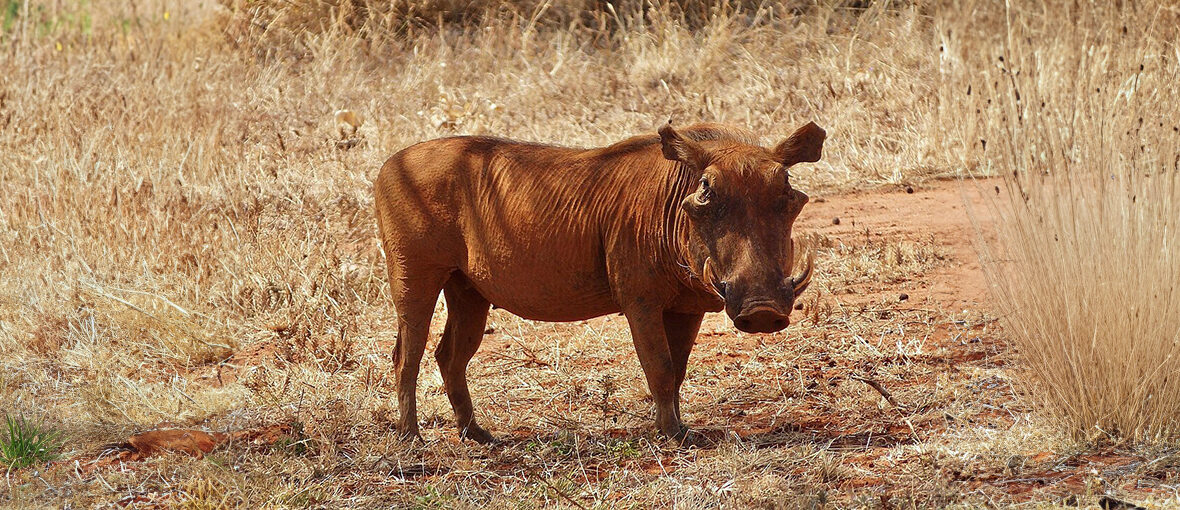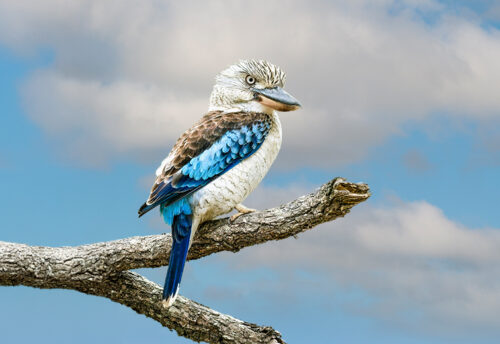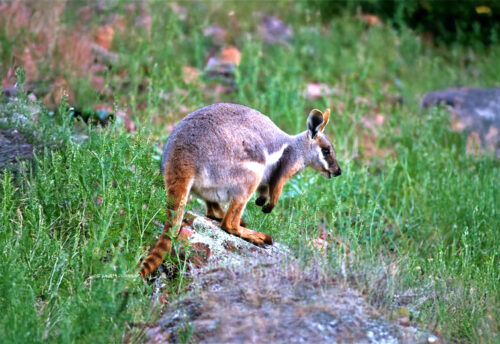
The desert warthog hails from the Horn of Africa region of East Africa. There are 2 subspecies: the Cape warthog & the Somali warthog. Even though they face the threats of habitat loss at the hands of farming and ranching; & climate change, which causes severe droughts, these wild porcines are still abundant enough to be listed as Least Concern by the IUCN. Their numbers are decreasing though.
First the Stats…
Scientific name: Phacochoerus aethiopicus
Weight: Up to 165 lbs.
Length: Up to 49 inches
Height: Up to 29.5 inches, at the shoulders
Lifespan: Up to 10+ years
Now on to the Facts!
1.) There were 2 divergent lines of warthogs in existence thousands of years ago, during the Holocene epoch.
2.) The ancestors of the present day common warthog had a different amount of incisors than that of the ancestors of the desert warthog.
3.) During the late nineteenth century, the desert warthog became extinct in South Africa.
4.) They derive their common name due to the presence of facial growths called warts.
5.) Their current range extends from southeastern Ethiopia through western Somalia, and into eastern and Central Kenya.
But wait, there’s more on the desert warthog!
6.) The preferred habitats include: open arid countrysides with thin woodlands that contain scattered trees, xerophytic scrublands, and also sandy plains.
7.) These critters do need to drink standing water, as they have not evolved the ability to obtain enough moisture from the foods they eat.
Did you know…?
A group of warthogs is called a sounder.
8.) A sounder occupies a home range of approximately 3.9 square miles, that typically contains 1 or more water holes.
9.) Burrows are either constructed or taken over from other animals that had previously abandoned them. The burrows are used by different individuals, i.e. a burrow that is used by 1 individual might later be used by another.
10.) Desert warthogs are diurnal (active during the day).
But wait, there’s still more on the desert warthog!
11.) Sounders typically consist of females and their offspring. Males occupy bachelor sounders.
12.) Various grasses, leafy plants, flowers, and fruit are their primary source of food. But they will also feast on insects and even carrion (dead animals) when their primary food source is scarce.
Did you know…?
These warthogs can run at speeds of up to 34 mph, for short distances.
13.) The females come into oestrus (heat) every 6 weeks in the breeding season, which typically coincides with the end of the rainy season, between March – May.
14.) Females undergo up to a 170 day gestation (pregnancy) that yields up to 3 piglets.
15.) Piglets are weaned at 3+ months however, they remain dependent on their mother for several more months after that.
But wait, there’s still a little more on the desert warthog!
16.) Lions, leopards, cheetahs, and hyaenas all prey on these warthogs.
17.) When pursued by a predator, the piglets will dive into their burrow head first, while the parent will back into the burrow and face the threat with her sharp tusks.
Did you know…?
The tsetse fly often uses the desert warthogs as hosts to continue their lifecycle.
18.) Desert warthogs were intentionally infected with the virus that causes African swine fever. It was then found that these warthogs showed no external signs of the infection but that they did remain infective to domestic pigs for at least 33 days, which is when the experiment ended.
19.) At 1 time, farmers used to shoot desert warthogs to protect their pigs from getting infected. This continued until they realized it wasn’t the warthogs infecting their pigs, but rather ticks.
20.) In some parts of their range efforts are being made to cull warthog numbers because of the tsetse fly issue.
Now a Short Desert Warthog Video!
Be sure to share & comment below! Also, check out the Critter Science YouTube channel. Videos added regularly!
Want to suggest a critter for me to write about? Let me know here.
Some source material acquired from: Wikipedia & IUCN
Photo credit: jean-paul boerekamps



